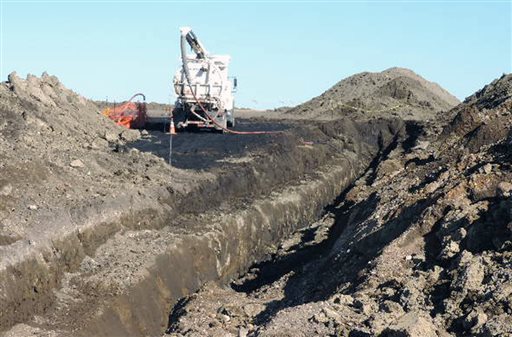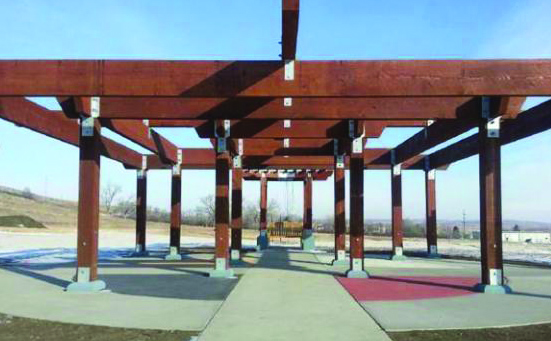Some North Dakota counties that are not experiencing the oil boom and growth that have brought the state into the national limelight. These counties are now the target of the U.S. Department of Agriculture’s StrikeForce initiative, which aims to stimulate economic growth.
By: Katherine Grandstrand, Forum News Service
Published April 05, 2013, 07:30 AM Grand Forks Herald
DICKINSON, N.D. — The prosperity seen in North Dakota is unmatched anywhere else in the country. As of February, the state’s unemployment rate sat at 3.3 percent.
For some Americans, North Dakota is like Israel was to the Jews in the book of Exodus — a land flowing with milk and honey. Modern-day pilgrims come to North Dakota because it is flowing with oil and manufacturing jobs.
Pitted against this image are some North Dakota counties that are not experiencing the boom and growth that have brought the state into the national limelight. These counties are now the target of the U.S. Department of Agriculture’s StrikeForce initiative, which aims to stimulate economic growth.
“We do have areas of consistently high poverty,” said Jasper Schneider, state director of USDA Rural Development for North Dakota. “Official unemployment rates in these counties are upwards of 15 percent. Unofficial unemployment is actually quite a bit higher than that.”
Before last week, six states — Georgia, Arkansas, Mississippi, Colorado, New Mexico and Nevada — were part of the program. Agriculture Secretary Tom Vilsack’s announcement expanded StrikeForce to include 10 more — the Dakotas, the Carolinas, Alabama, Alaska, Arizona, Texas, Utah and Virginia.
In North Dakota the program will target Benson, Rolette and Sioux counties along with the tribal nations of Standing Rock Sioux Tribe, Spirit Lake Tribe and Turtle Mountain Band of Chippewa Indians.
“A chain is only as strong as its weakest link,” Schneider said. “With our resources, both on the state level and the federal level, we have an enormous opportunity to pick up all parts of the state — especially our lowest performing parts,” Schneider said.
The StrikeForce promotes existing USDA agencies and programs to encourage economic growth in impoverished counties — 90 percent of all poor counties are considered rural.
“We kind of throw our full weight at these areas of high poverty and see if we can’t move the needle,” Schneider said.
In Nevada, which was part of the second wave of states to use the StrikeForce initiative, USDA representatives first reached out to the tribes, which helped grow trust between them and the agency, said Bill Elder, assistant state conservationist for operations for Nevada Natural Resources Conservation Service and the StrikeForce state coordinator.
“We identified the Native American as the priority underserved community within Nevada,” he said from his Reno, Nev., office. “The leadership of the Rural Development, of FSA — the Farm Service Agency — and NRCS went to each one of these tribes and sat down with them and said, ‘Look, we’re here, and these are the programs and services that we offer.’ ”
Because StrikeForce is an umbrella program for all USDA agencies, it allows them to work together more efficiently to serve those eligible and identify individuals who may qualify for programs through other USDA agencies, Elder said.
“At the end of year one, what this had done for us was open pathways of communication that we otherwise wouldn’t have,” he said. “If we can articulate what it is we have to offer both in terms of programs and technical services so they can make an informed decision about what’s best for them, that’s the home run.”
In its second year, Nevada expanded the program to include outreach to small farmers by having a presence at pertinent events, such as agricultural shows.
“Geographically speaking, it’s fairly easy to do,” Elder said. “We gain visibility, we are able to have one-on-one contact with people, find out what their issues are, make them aware of program opportunities and services, and that’s really the key, is that one-on-one or the small-group contact.”
One of the first StrikeForce efforts in North Dakota will have USDA representatives at the Looking to the Future sustainable agriculture convention from 8:30 a.m. to 3:30 p.m. today at Sitting Bull College in Fort Yates, said Aaron Krauter, state executive director for the USDA Farm Service Agency.
His agency plans to use the StrikeForce initiative to promote FSA programs and loans that could help farmers and ranchers succeed and grow, Krauter said.
“We also have real estate loans for individuals that are eligible if they want to purchase that pasture land or that quarter of crop ground,” he said.
USDA Rural Development released the Tribal Progress Report on Thursday, which highlights the USDA grants and loans the tribes of North Dakota have taken advantage of since 2009.
Many of those funds were used to improve the tribal colleges, Schneider said.
“I’m a firm believer that one of the best ways to combat persistently high poverty is through education,” Schneider said. “We made it a priority at USDA to partner with the tribal colleges, and they’ve really become first-class campuses and provide the opportunity of a real quality postsecondary education. They’re probably the best example of what’s going right in our tribal communities.”









